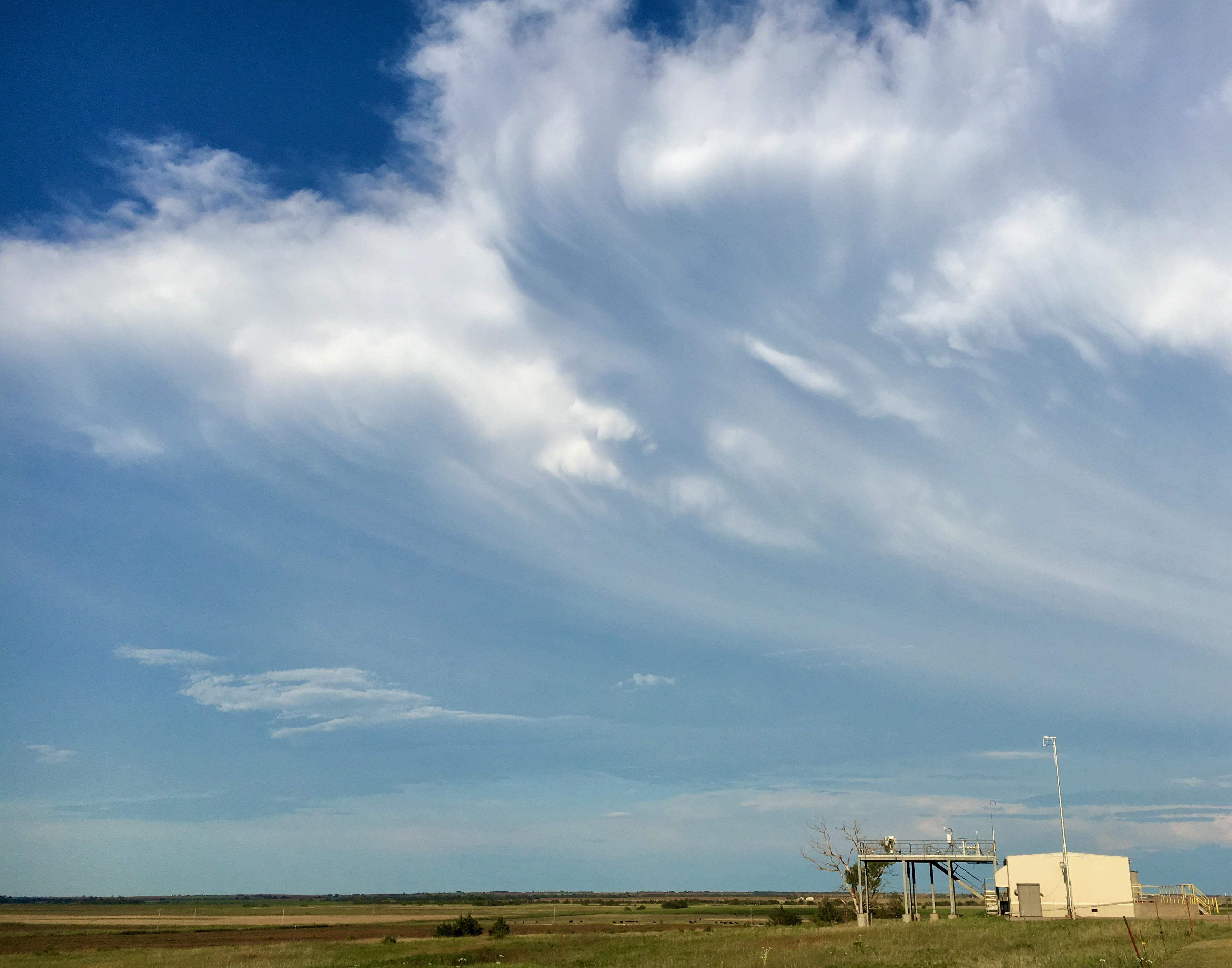"Fungal shrapnel" found in the air during HI-SCALE
Submitter
Smith, James N. — University of California, Irvine
Lawler, Michael Joseph — University of Colorado Boulder
Area of research
Aerosol Processes
Journal Reference
Science
During summer 2016 at the Holistic Interactions of Shallow Clouds, Aerosols, and Land-Ecosystems (HI-SCALE) Field Campaign, we found fragments of biological cells in the atmosphere that were many times smaller and many times more numerous that we knew existed. These fragments are most likely bits of fungal spores that have burst after swelling with water.
Impact
There are a few reasons why we find this exciting. The first is that we did not expect to see biological particles at such small sizes, nanoparticles ~30 nm in diameter. Usually atmospheric particles (aerosols) appearing in large numbers at this size are thought to be made from reactions of gases in the atmosphere, growing up from molecules rather than breaking down from larger particles.
Particles at these small sizes are much easier to inhale deep into the lungs than intact cells, which are micron-sized (1000s of nm in diameter). That leads to the second interesting part: we know that fungal cells can cause allergic reactions and asthma symptoms when they are released into the air. This sporulation process is often triggered by rain. We have found essentially fungal shrapnel, which likely contains the same irritants but are more numerous and more easily inhaled, albeit much smaller. We cannot say from this study whether the fungal nanoparticles we measured have health impacts, but it seems possible that at least some of the health impacts associated with aerosol fungus could be caused by these smaller particles.
Finally, there are potential implications for ice cloud formation. To form ice crystals in the atmosphere, an initial non-water seed is needed unless the temperature is extremely low, about -39 C. Biological particles are special in the atmosphere because some have the ability to act as such seeds. However, large intact biological cells are extremely rare in the atmosphere, so there is still some debate as to their importance for ice cloud formation overall. We have identified fungal nanoparticles present at orders-of-magnitude-higher concentrations, so if some or all of these are good ice nuclei, they could play a role in ice cloud formation. Whether the particles we identified are in fact effective ice nucleating particles, we cannot say from this study.
Summary
We used a technique called Thermal Desorption Chemical Ionization Mass Spectrometry (TDCIMS) to identify these fungal fragements. In TDCIMS, we draw ambient air into an inlet that size-selects ambient particles so that we only sample nanoparticles of ~ 20-60 nm diameter. These particles are collected onto a thin platinum filament for 30 minutes, and then the particles are vaporized by heating the filament, and the resulting gases are detected using a high-resolution mass spectrometer. We identified the fungal fragments by the detection of chitin, the main component of fungal cell walls, and sugar alcohols such as mannitol, which is a major energy storage molecule in fungal cells. A further analysis involved comparing the periods when the fungal nanoparticles were detected to the size distribution of ambient atmospheric particles. This is how we concluded that the particles were mostly centered around 30 nm in diameter. Finally, we tried to establish a relationship between rainfall and the appearance of fungal nanoparticles. We found some evidence that the particles appeared within roughly a day of rainfall at the local site, but we still do not know the whole process that occurs. Do the cells burst in the air or while they are still on the surface? Is it rain or actually relative humidity that controls the generation of these particles? We do not yet know the answers to these questions.


